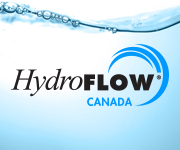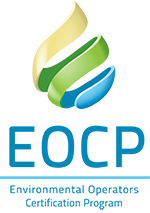 |
||||||||||||||||||
| Subscribe | Past Issues | www.cwwa.ca | Water Source Magazine | ||||||||||||||||||
|
CWWA News
As I noted last month, our obligation to share national information throughout our sector doesn’t stop just because of a little pandemic. We are excited to announce the first webinar series to replace our regular Window on Ottawa. We will still focus on federal policy and national issues, but we can’t get you all to Ottawa. So we have partnered with Water Canada magazine and renamed this series the Window on Water or WOW!
Federal Initiatives
On May 26, 2020, the Liberal government, with NDP support, voted to suspend full parliamentary sitting until September. Under the proposed measures, some MPs will still sit in Ottawa, four days a week, well into June as part of a special COVID-19 committee that will accommodate questions on the pandemic from opposition leaders. In addition, MPs from across the country will be able to take part via video conference, with large screens set up inside the House of Commons. Opposition days, where the other parties are able to set the agenda, are postponed until September, as are any private member’s bills. The Liberals have said that their concern with holding a full parliament is that members from across the country would be unable to participate. The House of Commons has no provision for proxy voting or casting votes electronically, requiring members to be personally in the chamber for every vote cast. Prime Minister Justin Trudeau said that, until the House of Commons rules can be changed to allow for some form of remote voting, a full parliament cannot resume. In June 2020, Environmental Response Assistance Canada (ERAC) alerted its clients that a Schedule 4 notification, indicating that an Environmental Emergency (E2) plan has been fully implemented must be submitted by August 24, 2020.
CWWA added its name, with 20 other water organizations, to call for the expedited creation of the Canada Water Agency. CWWA has long supported a more coordinated federal approach to water issues as various water issues fall into the portfolio of at least a dozen of the federal ministries and agencies. Member News
With the cancellation of all conferences, we expect many utilities are having a hard time finding training opportunities for staff to obtain their CEUs. While some provinces may have relaxed the requirements for CEUs this year, it doesn’t mean you have to. Our friends at the Environmental Operators Certification Program (EOCP) are offering a virtual conference September 15 & 16. While EOCP is based in British Columbia, this training event is open to all Operators across Canada. CEUs are transferable through reciprocal agreements between most provinces. The federal government has struck a proposed administrative agreement with regard to the administration of Wastewater Systems Effluent Regulations in Saskatchewan. Health Canada has published a new drinking water quality guideline on metribuzin in drinking water for public consultation. The document recommends a maximum acceptable concentration (MAC) of 0.08 mg/L (80 μg/L) is proposed for metribuzin in drinking water. Comments on the proposed guideline are due on September 11. CWWA’s drinking water quality committee is reviewing the document and will submit comments if there are any concerns. Provincial News
Several provinces have acted quickly to reduce environmental monitoring and reporting requirements during the COVID-19 situation. For example the Government of Saskatchewan enacted a Temporary Enforcement Policy to provide enforcement flexibility where issues can be directly attributed to COVID-19. Alberta has revised several monitoring requirements for industry including surface and groundwater testing. Other provinces have informally committed to offering flexibility when compliance is directly linked to COVID 19. CWWA does not actively monitor provincial regulations, and we encourage members to seek clarity directly from their regulator or their provincial association. The MELCCC provides extensive information for municipalities on its Municipal wastewater treatment works monitoring system homepage and in a published Guide to Developing a Specific Epidemic and Pandemic Plan for Municipalities. The Ontario government is taking action to protect lakes, waterways and groundwater supply in Ontario, now and for future generations. Last fall, Ontario extended the moratorium for new and increasing bottled water takings so that it could conduct a thorough review of the province’s water taking policies, programs, and science tools. This also allowed time to ask an independent third-party panel from Professional Geoscientists Ontario to review our findings on water bottling. Snippings & Clippings
Water Online Mounting public concerns and new state regulations in the U.S. are compelling water & wastewater utilities to address health risks associated with per- and polyfluoroalkyl substances (PFAS) – a class of pervasive chemicals found in drinking water and wastewater biproducts. Water Canada Canada’s built, or ‘grey,’ infrastructure requires an estimated investment of $5.3 billion per year in order to keep pace with the effects of climate change. This comes as COVID-19 puts unprecedented strain on our economy. A new Greenbelt Foundation report suggests a way to address infrastructure needs and build climate resilience, while helping the economy recover. Associated Press Mayor Jim Kenney kicked off a recent briefing on Philadelphia’s coronavirus response with an unusual request for residents: Be careful what you flush. Between mid-March, when the city’s stay-at-home order was issued, and the end of April, most of the 19 sewer and storm water pumping stations in Philadelphia had experienced clogs from face masks, gloves and wipes residents had pitched into the potty, Kenney said. Water Quality Research Journal Wastewater surveillance of pathogens may be a useful tool to help determine whether clinical surveillance of disease is effective or inadequate due to under-reporting and under-detection. In addition, tracking of pathogen concentrations over time could potentially provide a measure of the effectiveness of public health control measures and the impact of the gradual relaxation of these controls. Analysis of wastewater using quantitative molecular methods offers a real-time measure of infections in the community, and thus is expected to provide a more sensitive and rapid indication of changes in infection rates before such effects become detectable by clinical health surveillance. Models may help to back-calculate wastewater prevalence to population prevalence or to correct pathogen counts for wastewater catchment-specific and temporal effects. They may also help to design the wastewater sampling strategy. This article provides a brief summary of the history of pathogen wastewater surveillance to help set the context for the SARS-CoV-2 wastewater-based epidemiology (WBE) programmes currently being undertaken globally. Water Online The U.S. EPA has opted not to impose regulations on perchlorate, a toxic chemical that has been found to contaminate drinking water, has been linked to adverse health effects in infants, and had appeared close to receiving regulatory limits. Let's Grow Leaders You wouldn’t have wished for this ridiculous, unprecedented disruption. But if you’re like many leaders I talk with, this stressful period has also been surprisingly energizing. Until it wasn’t. You’re proud of your team. They’ve been working round the clock on a fast pivot. Maybe you’ve done more in the last sixty days than you could have ever imagined. |
||||||||||||||||||



